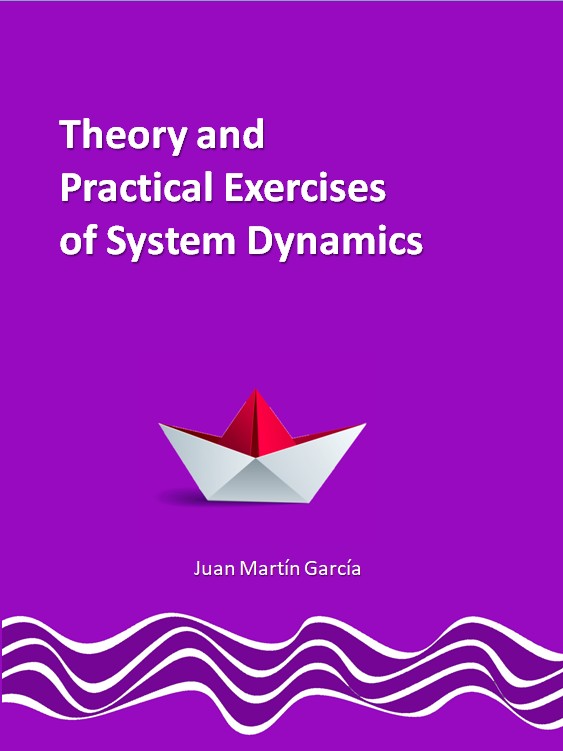Content
Paper 1. Gamification to elaborate a Business Model
This work present the case study in which students were asked to elaborate a Business Model (BM) for a new product. Group Model Building (GMB) and System Dynamics (SD) were used to promote discussion about the different possible future scenarios that could appear. The results suggest that the use of problem-solving methods helps to achieve a deeper learning.
Paper 2. Stress-Injury Pathway to Military Suicide
This paper introduce the Stress-Injury Pathway to Military Suicide (SIPMS), a systems model of suicide and its prevention in the military. SIPMS partitions the uniformed population into states that relate to mental health and suicide risk. Looking forward, it provides a basis for forecasting suicide rates, a quantitative means to evaluate proposed interventions, and a baseline for validating implemented interventions.
Paper 3. Modeling For Human Resources Planning
This paper investigate the dynamics of the Human Resource Planning (HRP) in a typical Information Technology (IT) company. HRP involves analyzing and forecasting the talent requirements of the organization. The main focus of the study was to construct a model for a multilevel organization structure with appropriate flows related to recruitment at various levels, promotion and attrition.
Paper 4. Conditions for Recoverers’ Well-being
The paper presents a model representing a Colombian urban waste issue, where a balance between social, economic and environmental conditions must be achieved, focusing on the recoverers’ well-being. By knowing the anticipated results of the different scenarios, all parties involved are motivated to make changes in the present to obtain joint long-term achievements.
Paper 5. Utility perceived by individuals
The paper analyzes the dynamics implicit in the qualitative concepts of utility and perception. The utility perceived by individuals is believed to be different from the utility experienced by that individual, and perceived information includes an information delay of the actual information to represent the discrepancy between actual information and what we represent.
Paper 6. Occupational Accident Prevention
The risk prevention system of a generic company is described using a simulation model to simulate the effects that occur after a serious emergency exercise. This study analyzes the complexity of the relationships between the parts of the system that can lead to accidents and simulates various strategies that reduce risk.
Paper 7. Planning & Maintenance of Corporate Knowledge
This paper identifies diverse problems confronting Human Resources (HR) managers regarding staff progression, including optimum mix of experience, balancing stability and "new blood" and maintenance of corporate knowledge, to permit the development of powerful HR "flight simulators".
Paper 8. Strategy Simulator for Newspapers
This paper describes a simulator designed to help newspapers develop coherent strategies that enables to examine strategies for developing online businesses and making the transition to media enterprises with newspaper and online components.
Paper 9. Emerging-State Actor Model
The paper through experiments the simulation confirms evidence of emerging-state actor behavior. The novelty of the model developed in the paper, used as a simulation for irregular conflict, is its ability to handle multiple forms of conflict including political grievance, terrorism, insurgencies and emerging-state actors.
Paper 10. Disinformation and Rumor Maker
This article refines the driving factors in disinformation behavior, constructed a causal diagram of the evolution of disinformation behavior; later a stock flow chart is constructed for quantitative analysis, and finally, a simulation experiment showed that the results showed that the negative attitude is an important factor in the appearance of misinformation behavior.
Paper 11. Stereotypes in Socio-Economic Systems
After several modelling iterations that synchronised the acquired models with the obtained responses, four main key stereotypes were identified: quality, ego, competence, and motivation. In this paper both dominant feedback loops and important multi-input and multi-output variables are used for their description.
Paper 12. Risk of Fire Based on Human Factors
The paper begins with exploring the recent advances on offshore fire and explosion risk analysis theories, followed by briefly introducing the research techniques employed in the proposed hybrid causal logic model which consists of event tree, fault tree, Bayesian network, and system dynamics to study the effect of human and organizational factors.
Paper 13. Enhancing Services Management Through Modelling
The focus of this paper is on the first two steps concerning qualitative modelling to support the conceptualization of “Ecosystems services (ES)”, then to facilitate sharing a general understanding of possible dynamics and sketching introductory dynamic hypotheses about possible consequences of management policy.
Paper 14. Impact of New Technologies on Employment
It is known there are two opposite positions in the academic world; the Tecno-Optimists and the Tecno-Pessimists, and this paper studies the effects of new technologies on employment, with priority AI with or without robots and/or drones; 3D/4D printing and Nanotechnology as the most important; followed by IoT; Autonomous driving; Blockchain; and Augmented reality.
Paper 15. The Bass Diffusion Model
The Bass Diffusion Model (BDM) is one of the most successful models in marketing research in particular and management science in general. This paper illustrates the limitations of the BDM, using mobile diffusion as a context, showing that it does not follow an S-curve in some cases.
Paper 16. Business Dynamics Simulator
This study develop a business simulation environment to help evaluate future businesses performance using system dynamics approach for entrepreneurship. Students see the simulation of their future businesses useful to check if the business will be profitable and cash breakeven.







